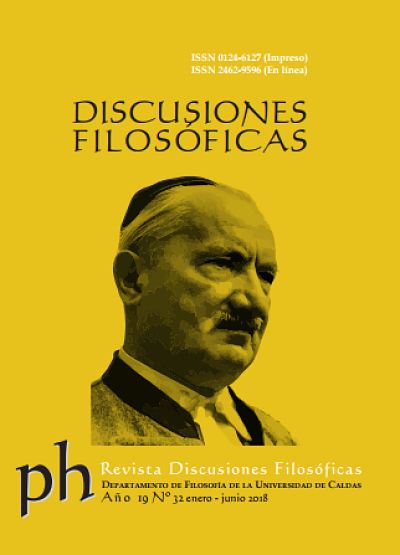Authors
Abstract
The self has been an explanatory principle to understand consciousness in its subjective character. This paper analyses what Gallagher has called the minimal self, its essential core, in its two separable modalities: the sense of ownership and the sense of agency. Some objections are offered to this sharp distinction, which, in turn, considers the sense of ownership as the founding aspect. The phenomenology of normal experiences (involuntary movements or unbidden thoughts) as well as pathological ones (thought insertion or delusion of control) should lead us to the essential component of the agentic nature of the self: intentionality, that is, a relational character or capacity. The minimal and fundamental sense of self seems consequently not o be originally linked neither to neurons or movements nor to psychological states of consciousness.
References
Claesges, Ulrich. Edmund Husserls Theorie der Raumkonstitution. Den Haag: Martinus Nijhoff, Parts II and III (55–144), 1964. Print.
De Haan, Saneke & Leon de Bruin. “Reconstructing the minimal self, or how to make sense of agency and ownership”, Phenomenology and the Cognitive Sciences 9, 2010:373–396. Print.
Frankfurt, Harry. The Importance of What We Care About: Philosophical Essays. Cambridge: Cambridge University Press, 1988. Print.
Fuchs, Thomas. Psychopathologie von Leib und Raum. Darmstadt: Steinkopff Verlag, 2000. Print.
Gallagher, Shaun. “Philosophical conceptions of the self: Implications for cognitive science”. Trends in cognitive science, 4 (1), 2000: 14-21. Print.
---. “Self-reference and schizophrenia: A cognitive model of immunity to error through misidentification”. Exploring the self: Philosophical and psychopathological perspectives on self-experience. Amsterdam: John Benjamins, 2000. Print.
---. How the body shapes the mind. Oxford: Oxford University Press, 2005. Print.
---. “Where's the action? Epiphenomenalism and the problem of free will”. Cause behavior? An investigation of the nature of volition. Cambridge: MIT Press, 2006. Print.
---. “Sense of agency and higher-order cognition: Levels of explanation for Schizophrenia”. Cognitive Semiotics. Jan, 2007: 32-48. Print.
---. “The natural philosophy of agency”. Philosophy Compass. Feb, 2007: 1-11. Print.
Graham, George and G. Lynn Stephens. “Mind and mine”. Philosophical psychopathology. Cambridge: MIT Press, 1994. Print.
James, William. The principles of psychology, repr. 1950. New York: Dover, 1980. Print.
Merleau-Ponty, Maurice. Le visible etl'invisible. Paris: Gallimard, 1964. Print.
Metzinger, Thomas. Being No One. Cambridge, Mass.: MIT Press, 2003. Print.
Neisser Ulric & Robyn Fivush. The remembering self: Construction and accuracy in the self-narrative. Cambridge: Cambridge University Press, 2008. Print.
Ricoeur, Paul. Sí mismo como otro. México/Buenos Aires/Madrid: Siglo XXI Editores, 2006. Print.
Scharfetter, C and G Benedetti. “Leiborientierte Therapie schizophrener Ich-Störungen“. Schweizer Archiv Fur Neurologie, Neurochirurgie Und Psychiatrie. 123, 1978: 239-255. Print.
Taylor, Charles. Sources of the Self. The Making of the Modern Identity. Cambridge: Cambridge University Press, 1989. Print.

 pdf (Español (España))
pdf (Español (España))
 FLIP
FLIP




























